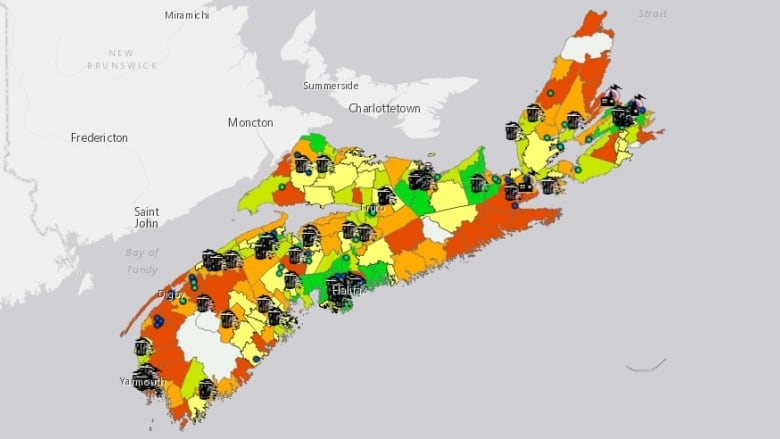Nova Scotia group maps environmental racism
The ENRICH Project looks at the cause and effects of toxic industries near marginalized communities

For years, marginalized communities living close to foul-smelling toxic sites around Nova Scotia have been able to smell environmental racism.
But now, thanks to an interactive map developed by The ENRICH Project, they're also able to see it.
Environmental racism refers to the practice of disproportionately placing environmental hazards such as industrial sites or landfills near racialized communities.
The ENRICH Project investigates the cause and effects of toxic industries situated near Mi'kmaq and African Nova Scotian communities.
You can see the full view, here.
The map plots instances of environmental racism affecting African Nova Scotian and First Nations communities across Nova Scotia by showing the proximity of these communities to degraded environments.
Lynn Jones, a Truro-based activist who's been involved with The ENRICH Project from the beginning, says the map makes visible what many communities have long suspected.
"The whole province is on the map, it will actually show the disproportionate impact on African Nova Scotian and aboriginal communities.
"You'll be able to say, 'Oh, there's a waste disposal place here, and it's only two kilometres away from an African Nova Scotian or aboriginal community.'"
Recognizing environmental racism
In Nova Scotia, the most prominent examples of this have included the effluent treatment facility at Boat Harbour, which borders Pictou Landing First Nation, and the placement of a landfill, infectious disease hospital and an abattoir near Africville.
Instances of environmental racism exist elsewhere in the province, and Jones says since The ENRICH Project has started its research, many people who would never have heard of the term are now identifying instances of it in their communities.
She hopes the map will do more than validate the experiences of affected communities; by making the phenomenon explicit, she wants the map to encourage those who are sceptical of environmental racism to recognize its existence.
Legislation essential
Jones says research alone isn't enough. Legislation such as private member's Bill 111, An Act to Address Environmental Racism, which has passed first reading in the Nova Scotia Legislature is essential.
"Everything becomes connected. The map is not in isolation of the research we're doing, or the environmental bill we want to get passed."
With files from Mainstreet and Allison Devereaux












_(720p).jpg)


 OFFICIAL HD MUSIC VIDEO.jpg)
.jpg)



























































































